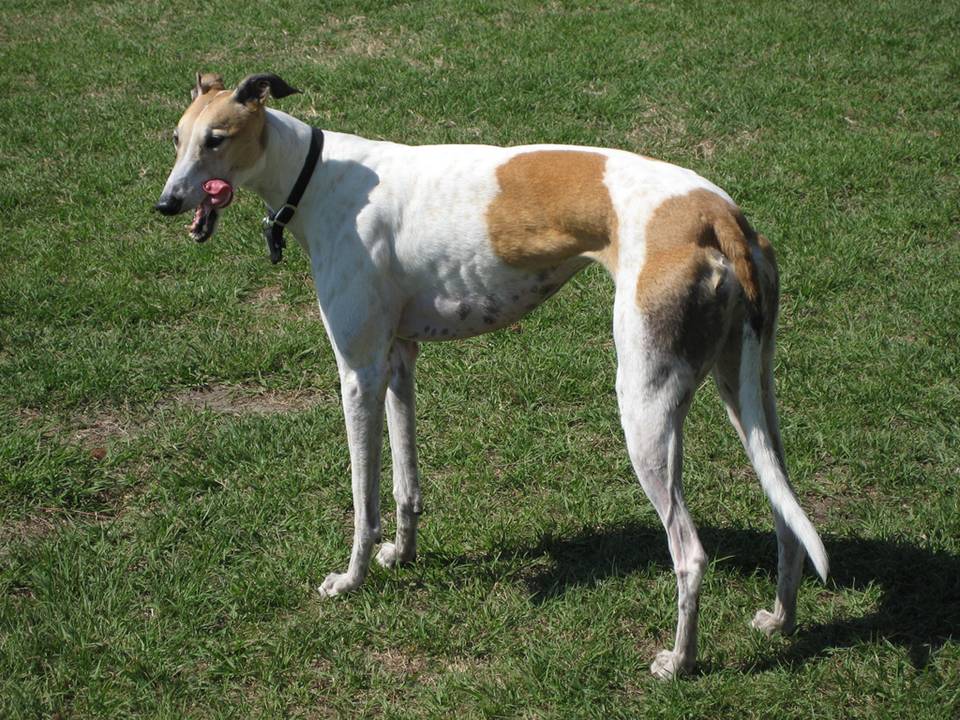The History of the Greyhound Breed of Dogs
The Greyhound is one of the oldest and most iconic dog breeds. Known for its sleek build, incredible speed, and noble demeanour, the Greyhound has played a significant role in human history. From ancient hunting companions to modern racing stars and beloved pets, Greyhounds have a rich and fascinating history.
Ancient Origins
The Greyhound’s history dates back over 4,000 years. The breed likely originated in ancient Egypt, Greece, and Persia. The name “Greyhound” may come from the Old English word “grei,” meaning dog, or the Latin word “gradus,” meaning high rank. This reflects the breed’s esteemed status in society.
In ancient Egypt, people revered Greyhounds. Art from this period often shows Greyhounds alongside pharaohs and gods. Tomb paintings and carvings depict them hunting, showcasing their speed and grace. Egyptians valued these traits for tracking game in the desert.
Greyhounds also held spiritual significance. People buried them in tombs to accompany their owners into the afterlife. Their long legs, deep chests, and streamlined bodies symbolized grace and beauty. These traits have defined the breed for thousands of years.

The Spread through Europe
As civilizations expanded, Greyhounds spread to Europe. Trade and conquest brought them to Greece and Rome. The Greeks admired Greyhounds for their hunting skills. Greek mythology and literature often featured Greyhound-like dogs. Homer, the famous poet, mentioned them in The Odyssey.
In ancient Rome, Greyhounds were popular for hunting hares and small game. Romans also used them in coursing events, an early form of dog racing. Their speed and agility made them ideal for these activities.
During the middle Ages, Greyhounds became symbols of aristocracy in Europe. In England, only nobles could own them. King Canute’s Forest Laws of 1016 banned commoners from owning Greyhounds. Violators faced severe penalties, including the death of the dog. These laws highlighted the breed’s association with wealth and privilege.
Greyhounds in the middle Ages and Renaissance
In the Middle Ages, Greyhounds represented chivalry and loyalty. They appeared in tapestries, manuscripts, and coats of arms. For example, the Tres Riches Heures, a 15th-century manuscript, features Greyhounds in aristocratic settings. They were more than hunting dogs; they were loyal companions to noble families.
During the Renaissance, Greyhounds became symbols of grace and elegance. Artists like Titian and Piero di Cosimo often painted them alongside royalty. These depictions reinforced their status as refined and cultured animals.
Greyhound in the Modern Era: Racing and Companion
In the 20th century, Greyhounds became famous for racing. Coursing, where dogs chase live game, had been popular in England since the 16th century. However, formal Greyhound racing began in the 1920s. Tracks with mechanical lures made the sport more organized. It quickly gained popularity in the U.S., U.K., and Australia.
Racing brought fame to Greyhounds but also controversy. While some dogs lived luxurious lives as champions, others faced mistreatment. Many were abandoned when they could no longer race. Animal rights activists have raised concerns, leading to the closure of many tracks. Today, there is a stronger focus on responsible breeding and adoption.

Despite their racing history, Greyhounds are now cherished as pets. They are gentle, calm, and affectionate. Despite their speed, they are often called “45-mile-per-hour couch potatoes” because they love lounging. Their slim build and short coats make them ideal for indoor living. Families and individuals alike appreciate their easy-going nature.
Conclusion
The Greyhound’s history is a story of evolution and adaptability. From ancient Egypt to modern race tracks, they have always been admired for their beauty, grace, and speed. Today, they are not just historical icons but also beloved companions. Whether as racing champions or gentle pets, Greyhounds remain a distinguished and enduring breed.


